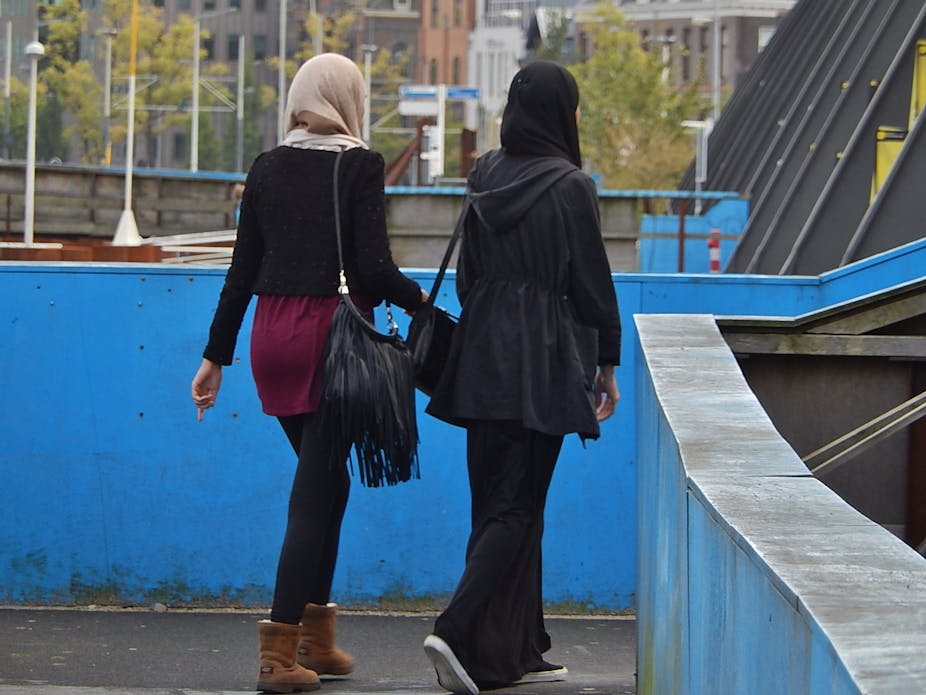Families are bound to be urged to be more vigilant for signs of radicalisation after it emerged that a young man from Dewsbury, West Yorkshire, is believed to have become the UK’s youngest ever suicide bomber at the age of just 17.
Talha Asmal is thought to have been part of a team linked to Islamic State that attacked an oil refinery south of the Iraqi city of Baiji on June 13, killing at least 11 people.
Local people expressed disbelief at Asmal’s fate, describing a quiet young man who had been “groomed” online by Islamic State fundamentalists. When he first disappeared from home in April, his family urged other parents to keep watch over their children.
This latest incident follows news of a London primary school that invited parents to a training session on preventing and detecting radicalisation.
The broad idea that families are important in this problem is welcome, since so much emphasis is usually placed on organisations such as mosques and schools, and on the power of social media. It’s also good to see ordinary Muslims – and not just religious leaders – identified as a potential solution rather than just a problem.
But we could go further than just pinning hope on family members, along with friends and teachers, as monitors of behavioural change. These people may be best placed to spot changes, but their role is far more complex and significant.
Talking, not watching
Ideas and behaviour are routinely formed, expressed, practised and challenged in kin and peer networks. Within those networks, everyone – both young and old – plays an active role at various times as learners, guides, teachers, and as exemplars, examiners and critics.
This process has several names – cultural transmission, socialisation and nurture. But whichever term is used when the process is discussed, children are more often than not presented as passive, ripe for development or ready recipients of formal teachings.
In the past, we looked at religious institutions and schools to understand how young people picked up beliefs and practices, for example in Catechism or Qu'ran classes. More recent research on Hindu and Muslim children has shifted the focus to domestic settings, looking at how children learn from other family members, often by imitation, from stories, artefacts, everyday practices, popular culture and now social media.
In another valuable study, this time on British Sikhs, Jasjit Singh focused on an older group of young people aged between 18 and 30 to find out where and how they acquired their knowledge of Sikh history, ideas and practices. Fewer young people are actively attending Sikh temples (gurdwara), often complaining of out-of-touch leaders, poor communication, the lack of English and just plain boredom.
Singh found that, while families were still acting as sources of Sikh history and community know-how, peer-to-peer transmission was increasingly important. Young Sikhs used online spaces, as well as student societies and youth camps, to ask questions of one another and catch up on current debates, as well as to fill gaps in their knowledge and understanding.

The online world has not unseated offline influences. The two remain linked, with questions about authority and trust highly pertinent for young people who seek out information. What’s more, new sources of authority have not entirely ousted traditional ones. Family members still have a role to play.
But peer-to-peer sharing of ideas and practices does not just take place in the world of social media or in places like university societies and organised religious events. Its also a family affair – and intra-generational as well as inter-generational transmission are both important, especially in communities where social life routinely revolves around the extended family, often locally-based, rather than wider networks of friends and acquaintances.
The missing piece of the puzzle
Turning to British Muslims, evidence shows they are relatively successful at passing on their faith compared with other groups. This may in part be because they feel the need to defend their religion and community against perceived threats, both locally and globally. Religiosity may deepen when a minority feels beleaguered. Informed thinking, superficial gossip and conspiracy theories about “us” and “them”, as well as everyday family-based Muslim teachings and the ideologies of various Islamic groups all get exchanged between peers, whether openly or away from the ears of other family members.
Little is known about what exactly is said, by whom to whom, and how it is received and passed on but judging from what we know about how family members and friends interact, there is strong reason to believe that young people don’t just do as they are told. They argue, critique and resist, just like their elders.
Some of the most compelling challenges to terrorist propaganda must surely already be taking place within families and between peers. What we need to find out is what tactics brothers and sisters, cousins and friends adopt to question and critique relatives who express extremist views and how they challenge assumptions, or undermine hard-line views or prejudices.
So it isn’t just a matter of those who are closest spotting the signs of attitudinal or behavioural change. Counter-narratives are being developed and deployed every day in families and among peers. We need to get a better idea of how these groups are presenting the information to help other families and halt the spread of radicalisation.

